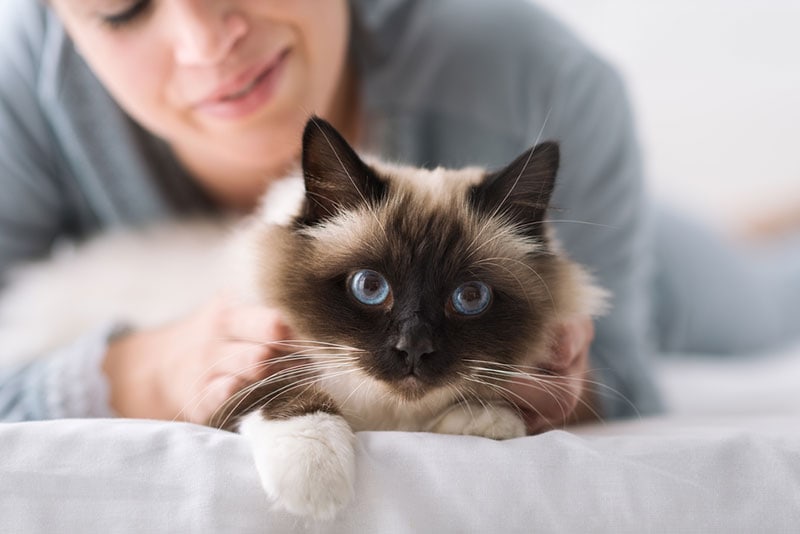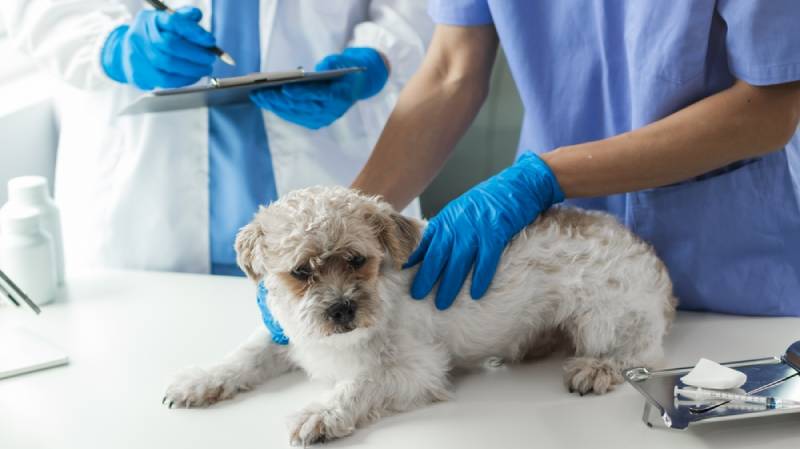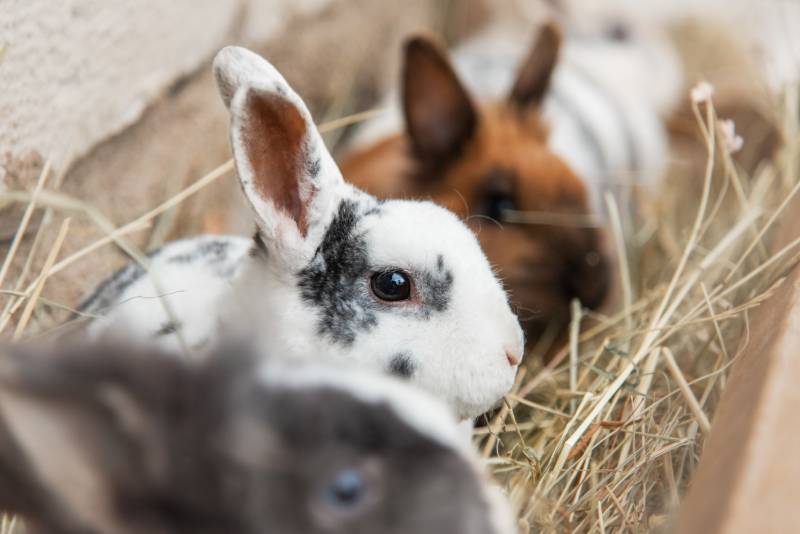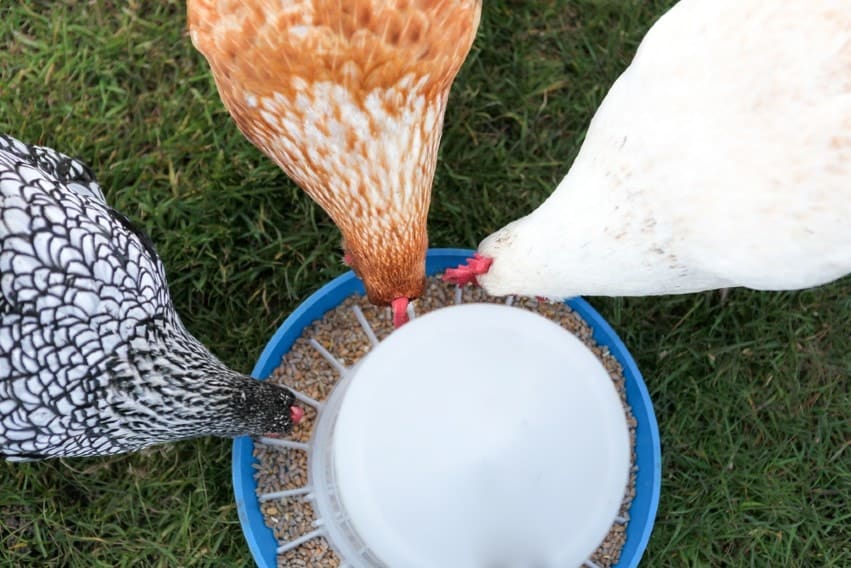VET APPROVED

The information is current and up-to-date in accordance with the latest veterinarian research.
Learn more »There are around 58.3 million cats living in the United States and mixed breeds are the most popular type of cat in the country. If we throw into the mix that there are also a large number of recognized cat breeds (TICA, for example, recognizes 73), figuring out what breed your cat is or the multiple breeds that make them up can be tricky, but not impossible.
In this post, we offer some tips on identifying your cat’s breed.

The 7 Ways to Get Closer to Knowing What Breed Your Cat Is
1. Size
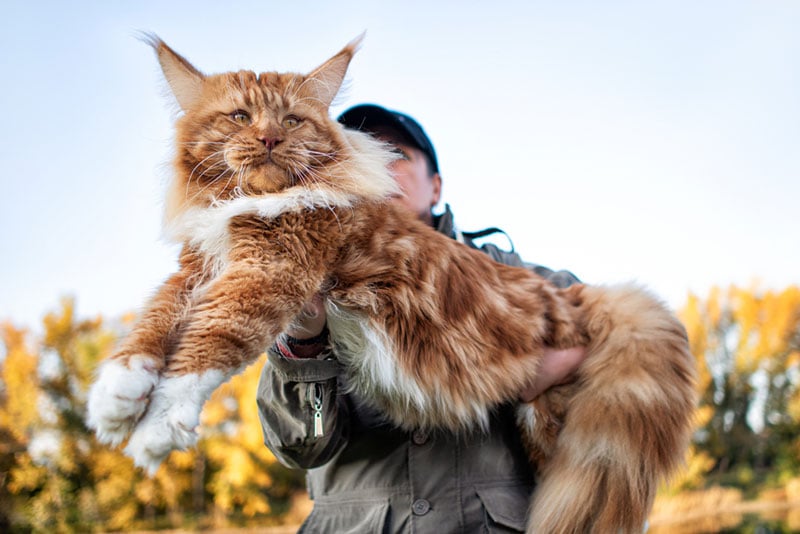
Cat sizes vary from small to large, but the majority fall into the medium category. By checking out how much your cat weighs and looking at their body type, you might be able to get an idea of what breed or breeds they’re made up of. Here are some examples of breeds in each size category:
Note: Some of these breeds can fall into two categories, for example, small to medium (like the Siamese) or medium to large. Also, note that female cats are often smaller than males.
- Small to medium: Devon Rex, Singapura, Munchkin, Cornish Rex, Bambino, American Curl, Kinkalow
- Medium: Siamese, Bengal, American Wirehair, Birman, British Shorthair, Korat, Abyssinian, Balinese, Russian Blue, Persian
- Large: Maine Coon, Norwegian Forest Cat, Ragdoll, Siberian, Ragamuffin, Savannah, Chausie
2. Face Type

Cat faces come in all shapes and sizes, ranging from narrow and wedge-shaped to broad and flat-faced. Breeds with these features include:
- Small/narrow face: Siamese, Sphynx, Cornish Rex, Devon Rex, Abyssinian, Singapura, Balinese, Peterbald
- Flat face:Persian, Scottish Fold, Burmese, Himalayan, Exotic Shorthair, British Shorthair, Scottish Fold, Munchkin, Burmilla, Selkirk Rex
3. Ear Type
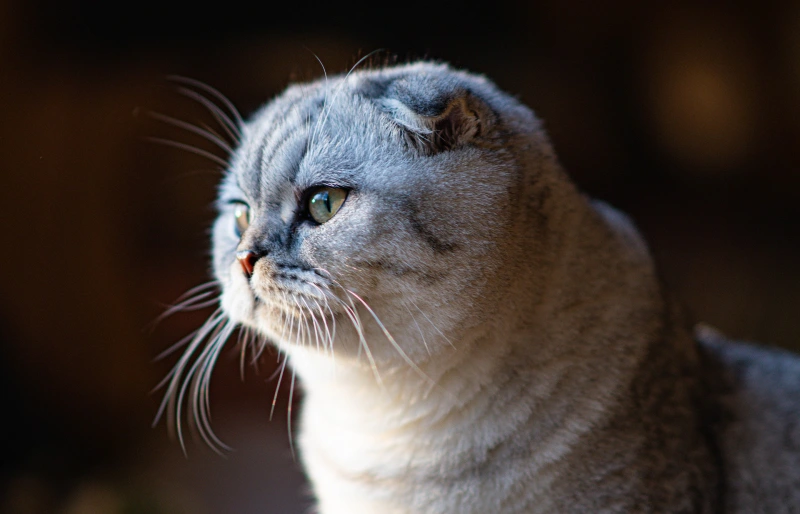
Just like face types, ear shapes can differ by breed. Ear types include curled, folded, and tufted/furnished.
- Curled ears: American Curl, Elf, Highlander
- Folded ears: Scottish Fold, Foldex, Ukrainian Levkoy
- Tufted ears: Maine Coon, Persian, Norwegian Forest Cat, LaPerm, Highlander, Birman,
4. Eye Color
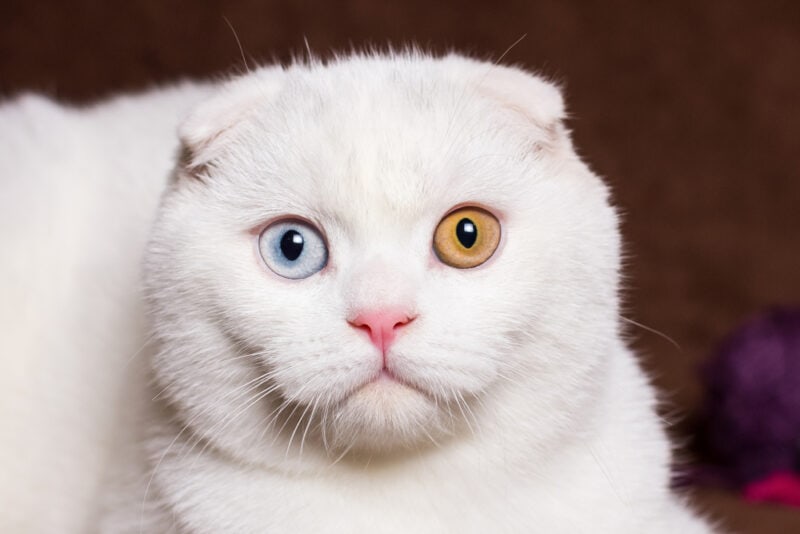
It isn’t always easy to tell a cat’s breed just from the eye color, but some cats have heterochromia, which means to have eyes in two different colors (typically one blue and the other another color). Breeds more likely to have heterochromia include:
- Turkish Angora
- Persian
- Devon Rex
- Turkish Van
- Khao Manee
- Oriental Shorthair
- Sphynx
- Ragdoll
- Himalayan
- Van Kedisi
- Russian White
5. Hair Length
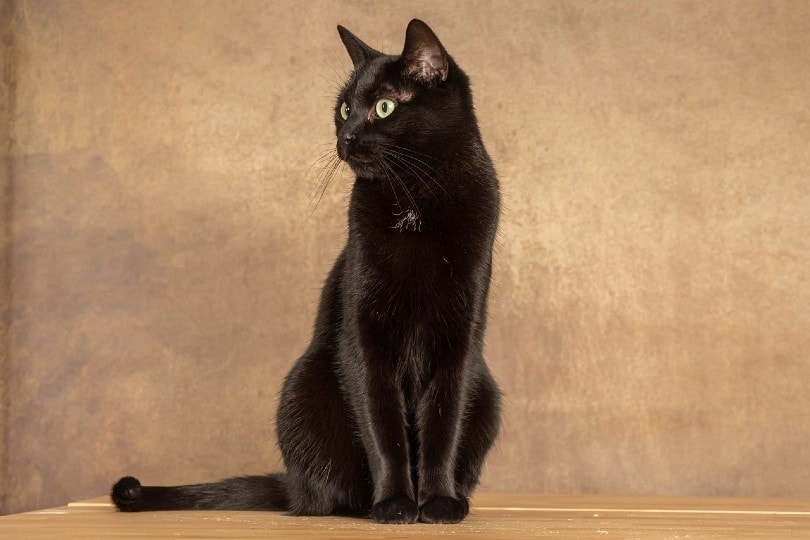
The length of your cat’s coat can help you narrow down potential breeds, but this is a tricky one because many breeds come in both shorthaired and longhaired varieties, and, with mixed breeds, pretty much anything is possible! Here are some possibilities:
- Short hair: Siamese, American Shorthair, Exotic Shorthair, British Shorthair, Bombay, Devon Rex, Cornish Rex, Egyptian Mau, Tonkinese, European Shorthair
- Long hair: Maine Coon, Persian, Birman, Norwegian Forest Cat, Himalayan, Ragdoll, Ragamuffin, Turkish Van
6. Coat Type
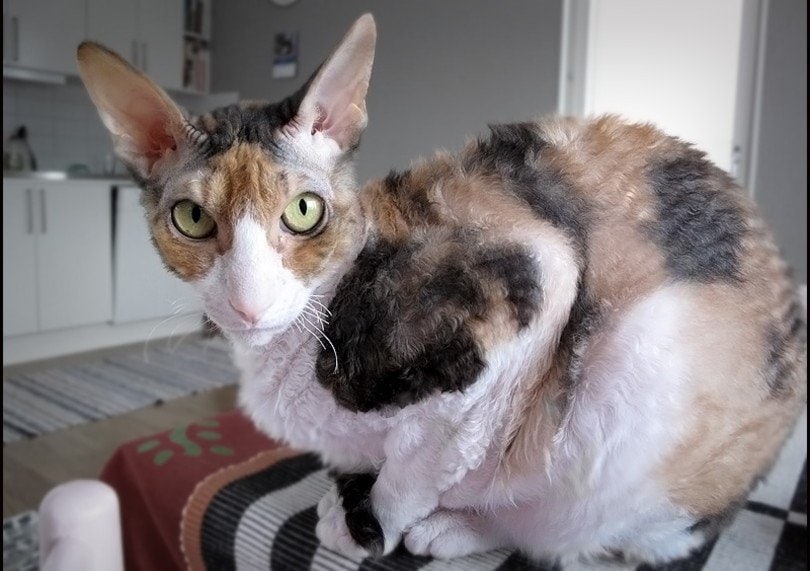
While some cats have straight coats, some are curly, and others are hairless (except for fine, downy hair). Take a look at your cat’s coat type to see if they might descend from a curly-haired or hairless breed.
- Curly hair: Devon Rex, Selkirk Rex, Cornish Rex, LaPerm
- Hairless: Sphynx, Donskoy, Ukrainian Levkoy, Bambino, Elf
7. Coat Colors & Patterns
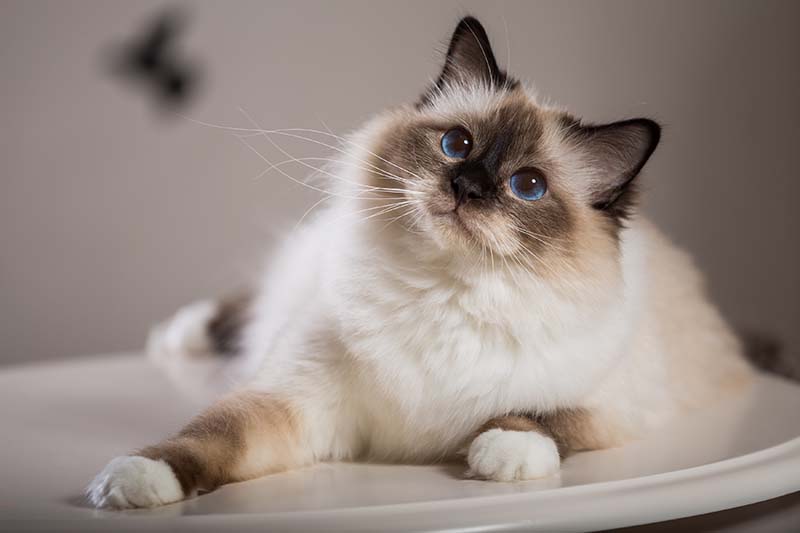
Common coat patterns include Tabby cats (cats with stripes, swirls, or dots). Calico, which is a tri-colored cat with an orange/red, black, and white coat, and tortoiseshell, which is a bi-colored cat, are also quite common, as are solid-colored cats. All four of these coat patterns can be seen in a wide variety of cat breeds, so pinpointing specific breeds from these patterns is incredibly difficult.
However, some breeds are famous for their distinctive pointed coat patterns (though some of these can also have other coat patterns). Here are some possibilities:
- Pointed: Siamese, Birman, Tonkinese, Colorpoint Shorthair, Ragdoll, Balinese, Javanese, British Shorthair

What About DNA Testing?
If your curiosity continues to niggle away at you and you can’t rest until you’re sure of your kitty’s origins, getting a DNA test is an option to consider.
This is carried out by taking a saliva sample from your cat or doing a simple cheek swab with equipment provided by the DNA testing company. Prior to this, you will likely have to register your cat on the company’s online system. Once the sample is taken, you simply mail it back to the company for lab testing and await the results.
However, make sure to look into the available DNA test products, and be aware of their limitations, as the feline breed database has not yet been developed as broadly as the canine one, meaning the results should be taken with a pinch of salt. Besides above mentioned, speaking with your veterinarian may also help shed some light on your cat’s potential breed.


Conclusion
When it comes to identifying your cat’s breed or the breeds that went into making the beautiful mix that they are, physical attributes may be able to give you some hints, while having your cat’s DNA tested could also help, as well as your vet’s professional opinion.
If you’re only mildly curious, however, you might decide that DNA testing just isn’t worth the cost—at the end of the day, your cat is always going to be amazing, no matter what breed they are or what they’re made up of!
- Cat Breeds
- Pet Industry Market Size, Trends & Pet Industry Statistics from APPA
- How Rare Is a Cat With Two Different Eye Colors? Vet-Reviewed Facts The Surprising Answer! – Catster
- What Breed is My Cat? Here’s How to Find Out
- How Many Cats Are In The USA? Cats Really Rule The World!
- How Accurate Are Cat DNA Tests? What Science Says | PangoVet
Featured Image Credit: Stock-Asso, Shutterstock
